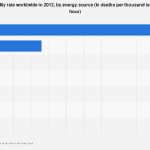
Electrolysis
There is no such thing as hydrogen in nature in its unadulterated state, however, must be delivered from sources like water and flammable gas. The blend of hydrogen requires energy. Preferably, the energy input approaches the energy content of the engineered gas. Hydrogen creation by any cycle, for example, electrolysis, transforming, or the consequences will be severe, is a course of energy change- cheap electricity plans in Galveston .
Electrical energy or synthetic energy of hydrocarbons is moved to the synthetic energy of hydrogen. Tragically, the course of hydrogen creation is constantly connected with energy misfortunes. Making hydrogen from water by electrolysis is one of the most awful energy-concentrated ways of delivering fuel. It is a spotless interaction as long as the power comes from a perfect source. Be that as it may, electrolysis is related to misfortunes. Electrolysis is the inversion of the hydrogen oxidation response the standard capability of which is around 1.23 Volts at NPT conditions. In any case, electrolyzers need higher voltage to separate water into hydrogen and oxygen. The over-potential is expected to defeat polarization and ohmic misfortunes brought about by electric flow stream under functional circumstances.
Reforming
Hydrogen can likewise be removed from hydrocarbons by reforming. This compound process is, on a fundamental level, an energy move process. The HHV energy contained in the first substance can be moved to the HHV energy of hydrogen. Hypothetically, no outside energy is expected to change over a hydrogen-rich energy transporter like methane (CH4) or methanol (CH3OH) into hydrogen via autothermal steam reforming. In any case, truly, warm misfortunes can’t be kept away from and the HHV energy content of the first hydrocarbon fuel generally surpasses the HHV energy contained in the produced hydrogen. The productivity of hydrogen creation by reforming men is about 90%.

Thusly, more CO2 is delivered by this “diversion” process than by direct utilization of the hydrocarbon forerunners. In any case, no undeniable benefits can be determined regarding great to-wheel proficiency and generally CO2 outflows. For most functional applications flammable gas can do what hydrogen likewise does. There is no requirement for a transformation of gaseous petrol into hydrogen which, as displayed in this study, is harder to bundle and disseminate than the normal energy transporter. The source energy (power or hydrocarbons) could be utilized straight by the shopper at similar or considerably higher source-to-support effectiveness and lower by and large CO2 discharge.
Updating power or gaseous petrol to hydrogen doesn’t give a general answer for the energy future, albeit a few areas of the energy market might incline toward hydrogen. Armada activity of vehicles might be one such application. At the present energy costs, delivering hydrogen is significantly more costly by water electrolysis than by reforming petroleum derivatives.
Transfer of Hydrogen
Fluid can be depleted from a full into an unfilled compartment by the activity of gravity. There is no energy required, except if the fluids are moved from a lower to a higher tank, under controlled stream rates, or under sped-up conditions. The exchange of compressed gases submits to various regulations. Accept two tanks of equivalent volume, one full at 200 bar and the other void at 0 bar pressure. Subsequent to opening the valve between the vessels gas will stream into the vacant tank, yet the stream will stop when pressure equilibration is achieved.
The two tanks are half full or half unfilled. A siphon is expected to move the excess substance of the stock tank into the getting tank. The exchange cycle might be confounded by temperature impacts. The substance of the full tank is cooled by the extension cycle. At equivalent tensions, the thickness of the leftover gas is higher than that of the moving gas in the other tank. As a result, more mass remaining parts in the first vessel are moved into the vacant one. Equivalent mass exchange is achieved solely after the temperatures have reached harmony after some time.



